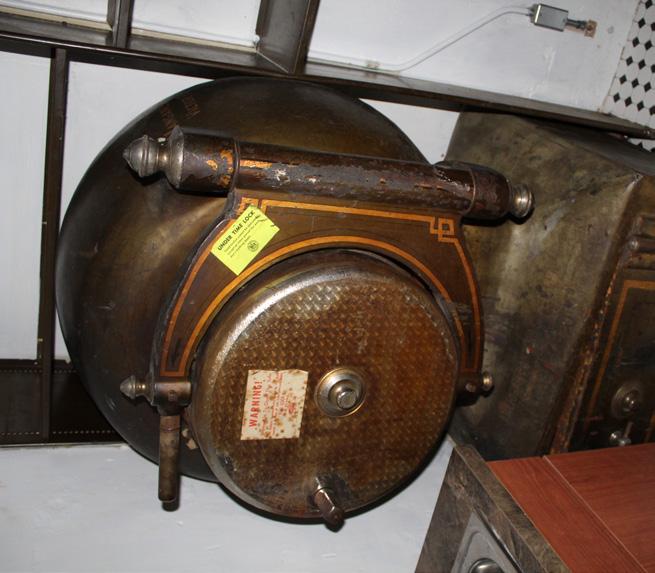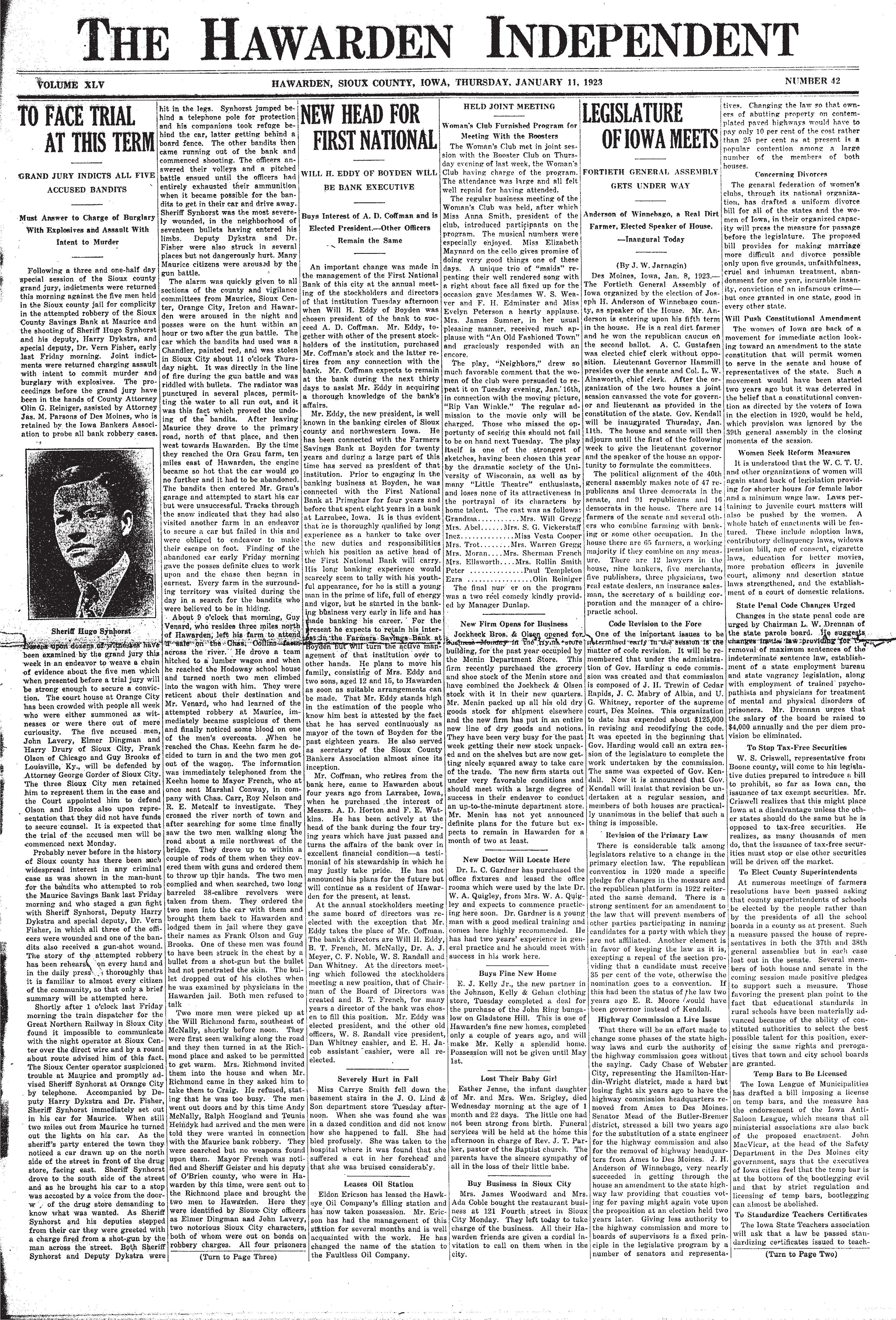
3 minute read
GUN BATTLE ON MAIN STREET IN MAURICE
John Vander Ploeg and Peter Vos outside the Sioux County Savings Bank in Maurice. Photo from Maurice centennial book courtesy of Sioux County Genealogical Society.
Ninety-seven years ago, Maurice was in the limelight after an attempted robbery of the Sioux County Savings Bank was followed by a gun battle between the bandits and Sheriff Hugo Synhorst and his deputies.
Advertisement
According to the Jan. 13, 1923, edition of the Alton Democrat, “The robbers had broken into the vault and were at work on the safe when the shot fired by their confederate on guard outside notified them that their plans had been discovered. They rushed from the bank and engaged in the gun battle which resulted in the wounding of Sheriff Synhorst.” The Jan. 11, 1923, edition of the Hawarden Independent said “Synhorst was the most severely wounded, in the neighborhood of seventeen bullets having entered his limbs.” His deputies were also hit, but not seriously wounded.
Some time after midnight on Jan. 5, 1923, the sheriff had been called by the telephone operator in Sioux Center who told him the wires into Maurice had been cut. “Sheriff Synhorst, taking a 38-40 rifle, Harry Dykstra and Dr. (Vernon) Fisher, each taking a shot gun and a number of shells loaded with buckshot, hurried to Maurice,” said a story in the Boyden Reporter. Arriving around 2 a.m., the lawmen were met with gunfire by the outlaws’ man on guard, Harry Drury. “The Sheriff and his deputies returned the fire, Synhorst aiming to put the car out of commission and Fisher and Dykstra directing their attention to the men.”
After exchanging a number of shots, the bandits escaped in a red Chandler automobile they had stolen in Sioux City. About seven miles away, they abandoned the car – its radiator having been punctured with bullets. The Boyden Reporter said, “An attempt had been made to refill the radiator, and the footsteps around a water tank on the Grau farm near which the car was found, corresponded” to two of the bandits. They attempted to start both Ora Grau’s car and, a mile down the road, the car of John Beyker.
The story in the Sioux County Index (of Hull) said the manhunt for the criminals “was carried on by a half dozen posses and vigilance committees.” The Boyden Reporter said: “From the abandoned car, three tracks were followed southwest, two wearing overshoes, one without. Five miles further, a mile southwest of Ireton, the guns stolen at the Maurice hardware store were found together with a bag containing burglar’s tools, nitroglycerine, shells of the same kind as those stolen at Maurice, two .38 caliber revolvers and a number of other articles.”
Three of the bandits apparently hid in a straw pile near Ireton. Later, according to the Hawarden Independent, two of the suspects hitched a ride that morning on a horse-drawn lumber wagon driven by Guy Venard of Hawarden. Knowing of the attempted robbery, he became suspicious of the men and turned into the Charles Keehn farm where the authorities were called. The Boyden Reporter said these two were soon apprehended. “Olson had fresh blood on his coat, by laboratory test found to be human blood. He had a hole in his overcoat, shirt and underwear and an abrasion on his body just below the breast bone. When he was examined a buckshot bullet fell out of his underwear.”

The bandits tried to escape in a Chandler automobile similar to this one, but they didn’t get far because the sheriff had succeeded in shooting holes in the radiator.

The building is no longer a bank, but the safe is still there. Work is underway today to refurbish the former Maurice bank building and turn it into a library.

Newspaper headlines in the Alton Democrat, Jan. 13, 1923
“Each of these defendants were given a copy of this chain of circumstances, and each concluded that the game was up. The only thing left for them to do was to plead guilty and trust to the court to let them off a little easier for doing so,” said the Boyden newspaper.
Justice was quickly served in 1920’s Iowa. By the time of the Feb. 8, 1923, issue of The Boyden Reporter, four of the criminals had already been sentenced to prison. “John Lavery, age 32, Elmer Dingeman, age 23, Guy Brooks, age 33, and Frank Olson, age 31, have started a forty year term at the state penitentiary at Ft. Madison, Iowa, and Harry Drury is still at the hospital at Orange City, facing a like sentence.” The story said each admitted his part in the attempt to break into the bank with explosives, and “each carrying a thirty year sentence for his admitted attempt to murder the sheriff and his deputies.”

Headlines in the Haywarden Independent, Jan. 11, 1923



